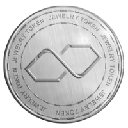-
 Bitcoin
Bitcoin $98,148.9978
1.83% -
 Ethereum
Ethereum $2,727.1676
0.26% -
 XRP
XRP $2.6766
-0.28% -
 Tether USDt
Tether USDt $1.0004
0.06% -
 BNB
BNB $655.5660
0.41% -
 Solana
Solana $173.9178
3.77% -
 USDC
USDC $0.9999
0.00% -
 Dogecoin
Dogecoin $0.2521
-0.29% -
 Cardano
Cardano $0.8032
5.35% -
 TRON
TRON $0.2460
1.23% -
 Chainlink
Chainlink $18.1972
1.48% -
 Sui
Sui $3.4396
8.54% -
 Stellar
Stellar $0.3425
1.97% -
 Avalanche
Avalanche $24.8980
5.02% -
 Litecoin
Litecoin $128.0202
-5.02% -
 Hedera
Hedera $0.2196
1.91% -
 Shiba Inu
Shiba Inu $0.0...01548
0.67% -
 Toncoin
Toncoin $3.6098
2.02% -
 UNUS SED LEO
UNUS SED LEO $9.7234
0.71% -
 Hyperliquid
Hyperliquid $24.4272
1.55% -
 Polkadot
Polkadot $5.0315
3.35% -
 MANTRA
MANTRA $7.8745
3.76% -
 Bitcoin Cash
Bitcoin Cash $323.7737
0.73% -
 Ethena USDe
Ethena USDe $0.9998
0.10% -
 Uniswap
Uniswap $9.2463
-2.47% -
 Dai
Dai $1.0000
-0.01% -
 Bitget Token
Bitget Token $4.4701
-7.87% -
 Monero
Monero $230.8236
-4.14% -
 NEAR Protocol
NEAR Protocol $3.4253
8.95% -
 Pepe
Pepe $0.0...09589
2.70%
What is sharding technology in Web3?
Sharding technology, used in Web3 networks like Ethereum 2.0 and Polkadot, enhances scalability by splitting the blockchain into smaller, independently operating shards, significantly increasing transaction throughput and reducing processing time.
Feb 19, 2025 at 03:36 am
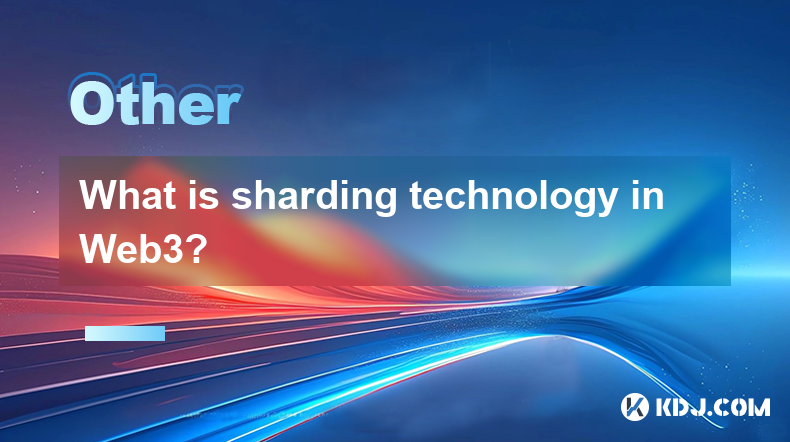
Key Points of Sharding Technology in Web3
- Definition of Sharding Technology
- Benefits of Sharding Technology
- Challenges of Implementing Sharding Technology
- Current Applications of Sharding Technology
- Future Applications of Sharding Technology
What is Sharding Technology in Web3?
Sharding technology is a data partitioning technique used in distributed computing systems to improve performance and scalability. In the context of Web3, sharding involves splitting a blockchain network into multiple smaller and more manageable shards or fragments. Each shard operates independently and processes its own set of transactions, reducing the overall computational load on the network.
By breaking down a blockchain into smaller shards, sharding increases the network's throughput, as multiple shards can process transactions simultaneously. This significantly reduces transaction processing time and allows the network to handle a larger volume of transactions without compromising security or decentralization.
Benefits of Sharding Technology
Enhanced Scalability:
Sharding technology addresses the scalability challenges faced by many blockchain networks. By dividing the network into smaller shards, each shard can handle a smaller portion of the overall load, allowing the network to process a much larger number of transactions per second.
Increased Throughput:
With multiple shards processing transactions concurrently, the network's overall throughput is significantly increased. This enables the network to handle a higher volume of transactions without experiencing congestion or delays.
Reduced Latency:
Sharding reduces the latency associated with transaction processing. Since transactions are processed in parallel across multiple shards, users experience faster confirmation times, leading to a more responsive and efficient user experience.
Energy Efficiency:
By distributing computational load across multiple shards, sharding reduces the energy consumption per transaction. This makes Web3 networks more sustainable and environmentally friendly.
Challenges of Implementing Sharding Technology
Data Consistency:
Ensuring data consistency across multiple shards is a significant challenge. The network must implement mechanisms to synchronize data between shards and maintain a single source of truth.
Security Concerns:
Sharding may potentially weaken the security of a blockchain network. Attackers could target individual shards, compromising the integrity of the network and potentially leading to double-spending or other malicious activities.
Complexity of Implementation:
Implementing sharding technology is a complex and technically demanding task. It requires significant engineering effort to design and implement a sharding protocol that maintains the security, decentralization, and scalability of the blockchain.
Current Applications of Sharding Technology
Ethereum 2.0:
Ethereum 2.0, also known as Serenity, is the next major upgrade to the Ethereum network. It incorporates sharding as a key scaling solution to address the network's growing transaction volume.
Polkadot:
Polkadot is a blockchain platform designed to facilitate interoperability between multiple blockchains. It utilizes a sharding architecture to enhance the network's scalability and transaction processing capabilities.
Near Protocol:
Near Protocol is a blockchain network focused on scalability and ease of use. It employs sharding to achieve high transaction throughput and low latency, making it suitable for a wide range of applications.
Future Applications of Sharding Technology
Cross-Chain Interoperability:
Sharding technology can facilitate cross-chain interoperability by enabling communication and data exchange between different blockchains. This could create a more interconnected and collaborative Web3 ecosystem.
Supply Chain Management:
Sharding can be used to improve the efficiency and transparency of supply chain management systems. By distributing data across multiple shards, supply chains can maintain a single source of truth while reducing latency and improving traceability.
Decentralized Autonomous Organizations (DAOs):
Sharding can empower DAOs by enabling them to manage large-scale operations more effectively. By distributing data and decision-making processes across shards, DAOs can improve their efficiency and transparency.
FAQs
Q: How does sharding improve blockchain scalability?
A: Sharding increases scalability by splitting the blockchain into smaller shards, each of which handles a portion of the transactions, reducing the overall computational load and increasing transaction throughput.
Q: What are the challenges associated with implementing sharding?
A: Implementing sharding involves challenges such as ensuring data consistency across shards, addressing security concerns related to shard isolation, and overcoming the complexity of designing and implementing a sharding protocol.
Q: Which blockchain platforms currently use sharding technology?
A: Notable blockchain platforms employing sharding include Ethereum 2.0, Polkadot, and Near Protocol, all of which leverage sharding to enhance their scalability and transaction processing capabilities.
Q: How can sharding benefit cross-chain communication?
A: Sharding can facilitate cross-chain interoperability by enabling communication and data exchange between shards on different blockchains, fostering a more interconnected Web3 ecosystem.
Q: Can sharding improve supply chain management?
A: Sharding can enhance supply chain management by distributing data across multiple shards, maintaining a single source of truth, reducing latency, and improving traceability throughout the supply chain.
Disclaimer:info@kdj.com
The information provided is not trading advice. kdj.com does not assume any responsibility for any investments made based on the information provided in this article. Cryptocurrencies are highly volatile and it is highly recommended that you invest with caution after thorough research!
If you believe that the content used on this website infringes your copyright, please contact us immediately (info@kdj.com) and we will delete it promptly.
- The Man Behind the Melania Trump Memecoin Also Helped Create the Biggest Crypto Scam Since FTX
- 2025-02-21 06:35:22
- Bullionaire ($BULL): A New Cryptocurrency Project Blending Financial Opportunity with Strong Community Engagement
- 2025-02-21 06:35:22
- Pi Coin and Solaxy: Two High-Potential Crypto Projects on the Rise
- 2025-02-21 06:35:22
- Pi Network's Mainnet Launch: The Next Big Thing in Cryptocurrency? Unraveling the Truth Behind the Hype
- 2025-02-21 06:35:22
- MELANIA RSI Is Currently Neutral and Below 50 For Almost a Week
- 2025-02-21 06:35:22
- Unlocking the Mystique of Pi Coin: Can It Transform the Crypto Landscape?
- 2025-02-21 06:35:22
Related knowledge
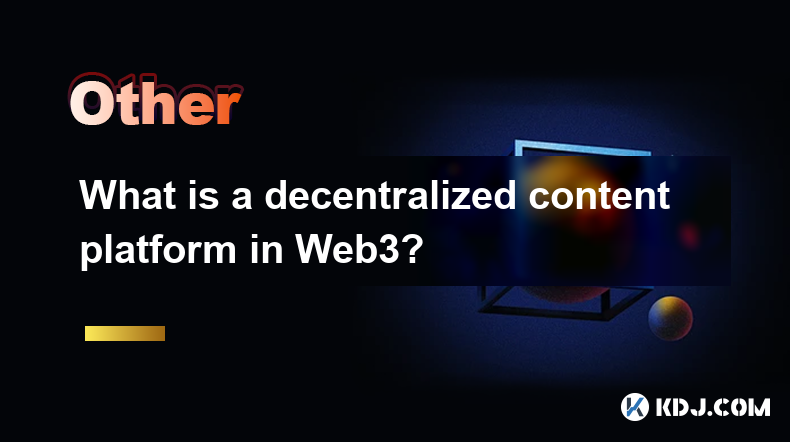
What is a decentralized content platform in Web3?
Feb 16,2025 at 05:13pm
Understanding Decentralized Content PlatformsKey Points:Decentralized content platforms shift content ownership and moderation away from centralized entities towards the community.Blockchain technology provides a transparent and immutable ledger for storing content and ownership records.Uncensorable content enables users to publish and access content wi...
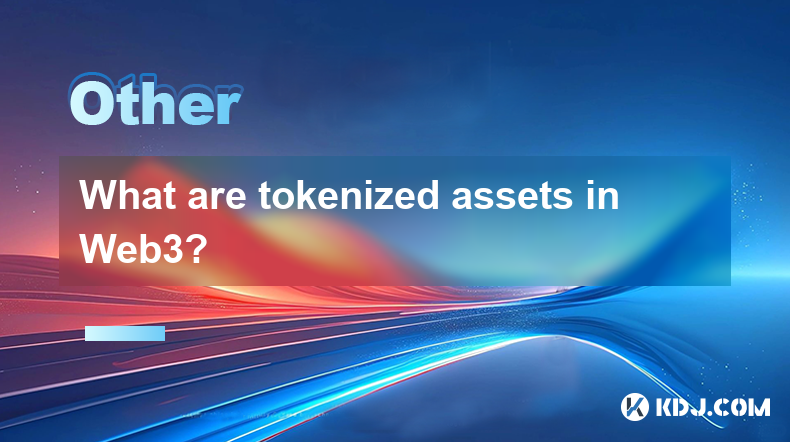
What are tokenized assets in Web3?
Feb 17,2025 at 11:36am
Key PointsIntroduction to tokenized assets in Web3Tokenization process and benefitsApplications and use cases of tokenized assetsTypes of tokenized assetsThe rise of tokenization in Web3Challenges and limitations of tokenizationFAQs about tokenized assetsWhat are Tokenized Assets in Web3?In the realm of Web3, tokenization has emerged as a transformative...
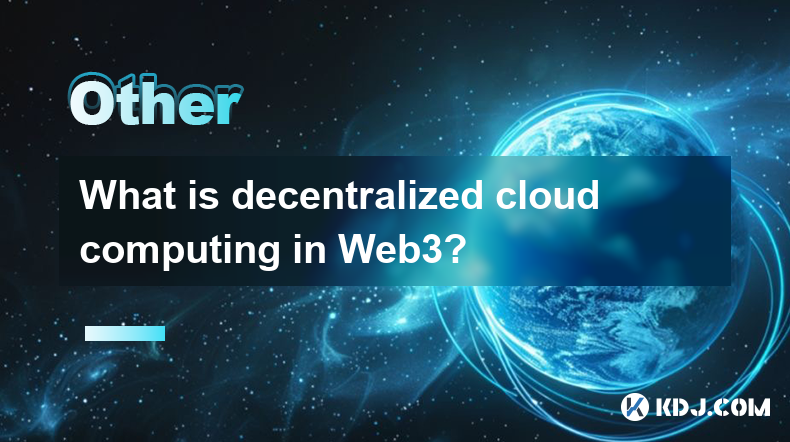
What is decentralized cloud computing in Web3?
Feb 16,2025 at 06:42am
Key Points:Definition of Decentralized Cloud Computing: A distributed computing model where resources and services are provisioned by a network of decentralized nodes rather than a centralized entity.Benefits of Decentralized Cloud Computing: Enhanced scalability, reliability, security, and cost-effectiveness.Use Cases for Decentralized Cloud Computing:...

What is sharding technology in Web3?
Feb 19,2025 at 03:36am
Key Points of Sharding Technology in Web3Definition of Sharding TechnologyBenefits of Sharding TechnologyChallenges of Implementing Sharding TechnologyCurrent Applications of Sharding TechnologyFuture Applications of Sharding TechnologyWhat is Sharding Technology in Web3?Sharding technology is a data partitioning technique used in distributed computing ...
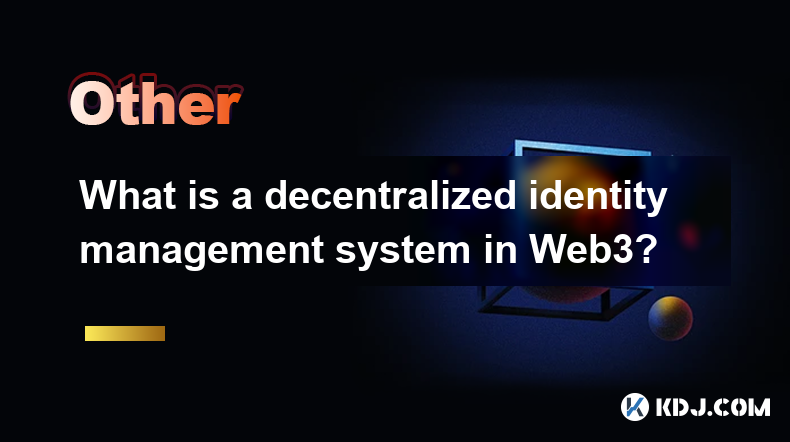
What is a decentralized identity management system in Web3?
Feb 17,2025 at 11:24pm
Key PointsDefinition and Overview of Decentralized Identity Management in Web3Benefits of Decentralized Identity Management in Web3Challenges and Limitations of Decentralized Identity Management in Web3Current State of Development and Adoption of Decentralized Identity Management in Web3Future Prospects and Trends for Decentralized Identity Management i...

What is liquidity mining in Web3?
Feb 17,2025 at 04:24am
Key Points:Liquidity mining is an incentive mechanism that rewards users for providing liquidity to decentralized exchanges (DEXes).Liquidity providers (LPs) deposit their crypto assets into a liquidity pool, which allows traders to swap tokens with reduced slippage.LPs receive rewards in the form of native tokens or fees from trading activity.Liquidity...

What is a decentralized content platform in Web3?
Feb 16,2025 at 05:13pm
Understanding Decentralized Content PlatformsKey Points:Decentralized content platforms shift content ownership and moderation away from centralized entities towards the community.Blockchain technology provides a transparent and immutable ledger for storing content and ownership records.Uncensorable content enables users to publish and access content wi...

What are tokenized assets in Web3?
Feb 17,2025 at 11:36am
Key PointsIntroduction to tokenized assets in Web3Tokenization process and benefitsApplications and use cases of tokenized assetsTypes of tokenized assetsThe rise of tokenization in Web3Challenges and limitations of tokenizationFAQs about tokenized assetsWhat are Tokenized Assets in Web3?In the realm of Web3, tokenization has emerged as a transformative...

What is decentralized cloud computing in Web3?
Feb 16,2025 at 06:42am
Key Points:Definition of Decentralized Cloud Computing: A distributed computing model where resources and services are provisioned by a network of decentralized nodes rather than a centralized entity.Benefits of Decentralized Cloud Computing: Enhanced scalability, reliability, security, and cost-effectiveness.Use Cases for Decentralized Cloud Computing:...

What is sharding technology in Web3?
Feb 19,2025 at 03:36am
Key Points of Sharding Technology in Web3Definition of Sharding TechnologyBenefits of Sharding TechnologyChallenges of Implementing Sharding TechnologyCurrent Applications of Sharding TechnologyFuture Applications of Sharding TechnologyWhat is Sharding Technology in Web3?Sharding technology is a data partitioning technique used in distributed computing ...

What is a decentralized identity management system in Web3?
Feb 17,2025 at 11:24pm
Key PointsDefinition and Overview of Decentralized Identity Management in Web3Benefits of Decentralized Identity Management in Web3Challenges and Limitations of Decentralized Identity Management in Web3Current State of Development and Adoption of Decentralized Identity Management in Web3Future Prospects and Trends for Decentralized Identity Management i...

What is liquidity mining in Web3?
Feb 17,2025 at 04:24am
Key Points:Liquidity mining is an incentive mechanism that rewards users for providing liquidity to decentralized exchanges (DEXes).Liquidity providers (LPs) deposit their crypto assets into a liquidity pool, which allows traders to swap tokens with reduced slippage.LPs receive rewards in the form of native tokens or fees from trading activity.Liquidity...
See all articles















































































